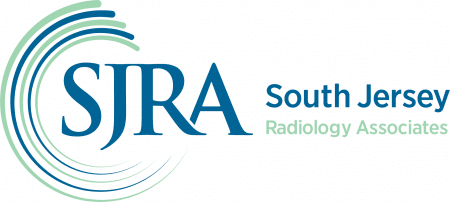Turning 40? Questions to ask your doctor about mammograms

Turning 40 is a milestone worth celebrating, and a reminder to put your breast health first with starting annual mammogram screenings.
“Studies have found that breast cancer risks start to increase with age, at the age of 40 rate of increase accelerates,” says Sharon Gassaway, mammography imaging lead at South Jersey Radiology. “There are a lot of things we don’t know about cancer, but we do know early detection is important. The smaller the breast cancer, the easier it is to treat.”
So before you schedule your appointment, get the answers to these key questions that Gassaway recommends for all patients ready to start screening.

Sharon Gassaway, R.T.(M), (R)
Mammography Imaging Lead
Do I have any risk factors?
While 40 is the recommended age for starting annual mammograms, some people may want to start screenings earlier if they have risk factors like a history of breast cancer in their family. If someone in your family was diagnosed with breast cancer at a young age, says Gassaway, you should start screenings 10 years prior to the age of the family members diagnosis.
Some other risk factors to consider are age, diet and genetics.
But even if no one in your family has had breast cancer, explains Gassaway, you could be the first, and that’s why mammograms are so important. “Being a woman is your number one risk factor. Have the conversation with your physician, get your mammogram and do self-breast exams monthly.”
Is this going to hurt?
Not every breast is the same. And that means not every patient will have the same screening experience.
“With our 3D mammograms, the machine takes images from different angles, like a top-to-bottom view and a side-to-side view, with the compression only lasting for a few seconds,” she says. “You just have to keep still. We can see underlying masses or calcifications. Calcifications are calcium deposits within breast tissue and are quite common. While most are benign, certain irregular or fine calcifications, may indicate breast cancer of precancerous changes. These would never be felt only a mammogram can detect these findings.”
But depending on a patient’s breast density, the technologist may have to use different techniques, like different levels of compression. That’s why SJRA technologists are sure to explain each step of the process at the start of an appointment to help patients be as comfortable as possible.
How will I get my results?
When it comes to breast cancer screenings, speed is important. Waiting around for your test results can be nerve-wracking. And in the case of a diagnosis, being able to start treatment leads to better outcomes for your health.
Now that digital imaging is the standard, instead of manually developing images (which was the standard decades ago), the time from start to finish of a screening is shorter than ever. And SJRA continues to improve upon this by offering an easy-to-use online patient portal, where patients can access their results as soon as they’re ready. Typically, patients should expect to have their doctor receive results within 72 hours, then within their own portal in about 5 – 7 days.
What if you find something suspicious?
Annual mammograms save lives. So when there is something suspicious or unclear on a mammogram result, that’s when the value of a comprehensive approach in one place really makes a difference.
“If a patient needs follow up imaging or tests, we’re providing that right on the premises,” says Gassaway. “If they need other screening tools, like an ultrasound or an MRI, we do that in our facility. If they need a biopsy, we’re doing that in our facility. We’re doing whatever we need to do for that patient to ensure they get the answers they need.”
A potential breast cancer diagnosis is stressful enough, adding the complexity of making multiple appointments at a number of centers following your mammogram will only add to it. The ease of having one provider to manage your breast health can help alleviate some of that stress allowing you to continue to focus on your other life’s responsibilities – whether that is spending more time with your family or exceling further in your career.
Who is doing my test?
Experience is the most important factor when it comes to choosing where to get your mammogram, says Gassaway. With board certified, subspecialized radiologists with decades of experience and technology that is usually only found in hospitals, SJRA sets itself apart from other imaging centers.
And despite all the experience, the team at SJRA hasn’t sacrificed any of their ability to care.
“Being a mammogram technologist by trade, you have to be compassionate,” Gassaway says. “It can be emotional. I’ve been in those shoes, and it’s nice to take care of people and follow up with them year after year – after they are treated and doing great.”


